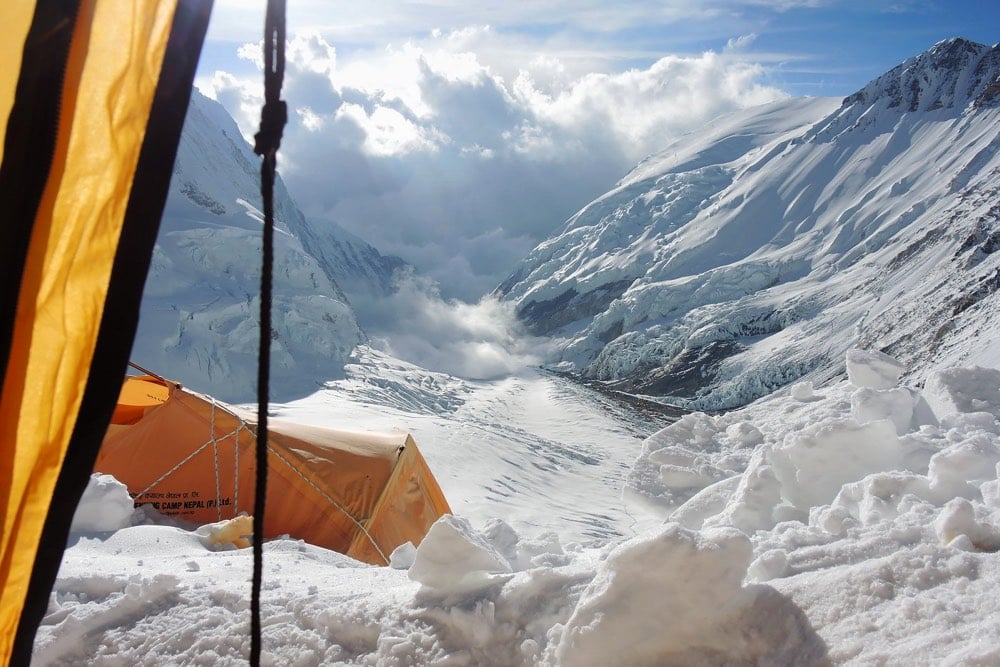Deliverance from Mount Everest

I meant to get an early start to the day this morning, but then I got stuck in bed for 30 minutes reading this completely engrossing story by John Branch about the recovery of the bodies of two Indian climbers near the summit of Everest.
Mount Everest occupies a rare spot in the collective imagination — a misty mix of wonder, reverence and trepidation. Hundreds of people successfully and safely reach the summit most years and return home with inspirational tales of conquest and perseverance. Other stories detail the occasional tragedies that leave a few people dead in a typical year. Those disaster stories are now their own genre in books and film.
Where most of those stories end is where this one begins, long after hope is gone — the quiet, desperate and dangerous pursuit, usually at the insistence of a distraught family far away, to bring the dead home. The only search is for some semblance of closure.
That was why the Sherpas with their oxygen masks and ice axes had come this far, this high, more than a year later.
The four Indian climbers, from a vibrant climbing culture in West Bengal, were like so many others attempting Everest. They saw the mountain as the ultimate conquest, a bucket-list item that would bring personal satisfaction and prestige. They dreamed of it for years and made it the focus of their training. As motivation, they surrounded themselves with photographs of the mountain, from their Facebook pages to the walls of their homes.
In other ways, however, they were different. Climbing Everest is an expensive endeavor, something to be both bought and earned. Many climbers are middle-aged Westerners — doctors, lawyers and other professionals — with the kind of wealth that the group from India could not fathom. Some spend $100,000 to ensure the best guides, service and safety.
These four climbers measured monthly salaries in the hundreds of dollars. They borrowed money and sold off possessions simply for a chance. They cut costs and corners, because otherwise Everest was completely out of reach.
Personally, I’ll never understand people who take such risks with their lives.1 Maybe that’s why I’m so interested in reading articles like these…I get to put myself into that mindset for a little while, to awaken the small part of myself that might be open to doing something I normally wouldn’t for reasons I would typically dismiss. (via @DavidGrann)
Although, if offered a one-way trip to Mars, I would be sorely tempted, so perhaps I’m being more than a little hypocritical in this regard.↩





Stay Connected